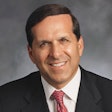More in Home
Woman accused of running $11M dental fraud scheme
January 8, 2025
Gum disease tied to inflammation biomarker
January 8, 2025
The Grumpy Consultant and the illusion of goal-setting
January 8, 2025
The top 5 CDOCS dental tips of 2024
January 8, 2025
Are you prepared to hire your next team member?
January 8, 2025
Jailhouse dental care results in lawsuit
January 7, 2025
These foods may be linked to a higher risk of gum disease
January 7, 2025
The 5 C's dental teams cannot avoid for increased production
January 7, 2025
Snails may be the key to soothing canker sores
January 6, 2025
How people in these states achieve the best smiles
January 6, 2025





















